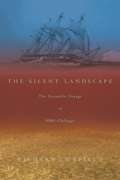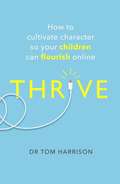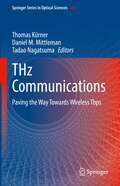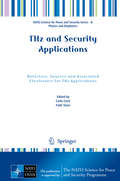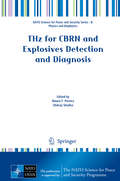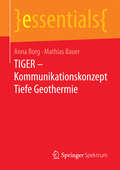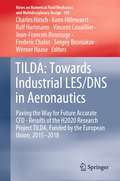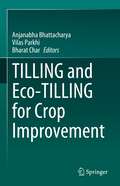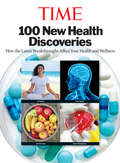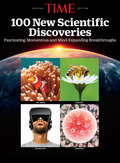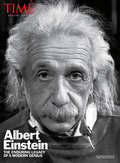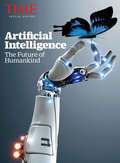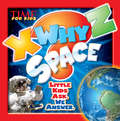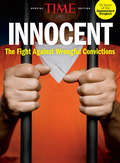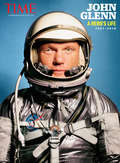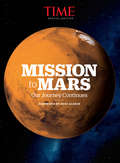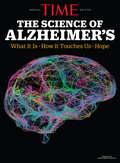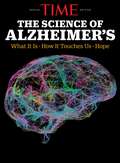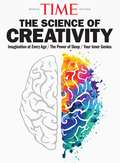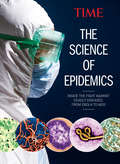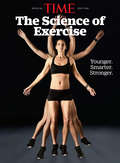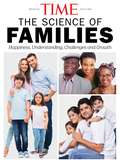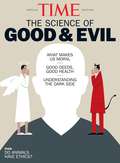- Table View
- List View
THE SILENT LANDSCAPE: The Scientific Voyage of HMS Challenger
by Richard CorfieldIn 1872 HMS Challenger set sail from Portsmouth, England, to map and sample the ocean floor. This marked the birth of modern oceanography. By retracing Challenger’s extraordinary voyage, we view our underwater landscape anew – focusing on what 21st century science is now able to add to this incredible story. The oceans make up more than two thirds of the Earth’s surface. But they are as mysterious for what they conceal beneath their surfaces as they are familiar for their ubiquity. Deep below the susurrus swell of waves lies an alien world that we have only begun to explore. The quest to know more about this secret domain began in earnest in the late 1800s. In 1859, Charles Darwin’s book On the Origin of Species by Means of Natural Selection set the scientific world abuzz with its radical theory of evolution, and sparked a feverish desire to know more about the workings of nature. Scientists became increasingly convinced that the ocean floor could provide proof – or refutation – of Darwin’s theory of natural selection. They believed that the ocean floor was a haven for life that had long been extinct on land and that obscure fossil evidence culled from the depths could provide us with information on species that no longer existed topside. So an expedition was specifically designed and undertaken to investigate the natural history and geology of the ocean floor. With its emphasis on locating and retrieving fossil records that would test the new theory of evolution, Challenger’s voyage was nothing less than a mission to choose between God and science. Sailing three and half years and 69,000 nautical miles through burning tropical heat waves and stupefyingly cold Antarctic seas, and suffering further privations of hunger, storms, and sometimes crushing boredom between data-collecting surveys, Challenger dredged up thousands of samples from the sea floor and mapped enormous areas of undersea terrain. The final result was nothing short of a roaring success. So extensive were their findings that it was to take the scientists 19 years to completely examine and report on all their data. The final report, published in 1895, ran to fifty volumes. Most startling of all was the revelation that the ocean was not a silent landscape that serenely reflected Earth’s past – it was a gloriously vibrant ecosystem teeming with a variety and multitude of life on a scale we could scarcely imagine from our landlocked perspective. Relying on the official documentation, logs, and journals of the ship’s company, The Silent Landscape recounts the tale of an extraordinary voyage brought to life by 21st-century science. From the endangered coral reefs of the Caribbean to the trackless depths beneath the western Pacific, The Silent Landscape takes us on an epic journey across time.
THRIVE: How to Cultivate Character So Your Children Can Flourish Online
by Dr Tom HarrisonWinner of the International Federation for Family Development Award.When Dr Tom Harrison, a leading expert in the field of character education and the Internet, bought his daughter her first smartphone, a major milestone had been reached: she had entered the 'cyber-world'. Harrison no longer needed to know what to think; he needed to know what to do. This is the first practical book of its kind to show parents and teachers how to develop character as the foundation for helping young people to thrive in their online interactions. It answers the question: How do we prepare our children to do the right thing when no one is watching?Based on his own experience as a parent, more than a decade of research and thousands of conversations with parents, teachers, children and policymakers, the REACT and THRIVE models have been developed to engage with character, wellbeing, social and emotional learning, ethics and digital citizenship - all the ingredients for flourishing online.The world is waking up to the importance of character for individual and wider societal flourishing. Harrison is at the forefront of this movement and is regularly invited to advise policymakers and thousand of teachers and parents around the world. This book is a must-read for parents and educators who want to help children not just survive but thrive online in their cyber-worlds.
THRIVE: How to Cultivate Character So Your Children Can Flourish Online
by Dr Tom HarrisonWinner of the International Federation for Family Development Award.When Dr Tom Harrison, a leading expert in the field of character education and the Internet, bought his daughter her first smartphone, a major milestone had been reached: she had entered the 'cyber-world'. Harrison no longer needed to know what to think; he needed to know what to do. This is the first practical book of its kind to show parents and teachers how to develop character as the foundation for helping young people to thrive in their online interactions. It answers the question: How do we prepare our children to do the right thing when no one is watching?Based on his own experience as a parent, more than a decade of research and thousands of conversations with parents, teachers, children and policymakers, the REACT and THRIVE models have been developed to engage with character, wellbeing, social and emotional learning, ethics and digital citizenship - all the ingredients for flourishing online.The world is waking up to the importance of character for individual and wider societal flourishing. Harrison is at the forefront of this movement and is regularly invited to advise policymakers and thousand of teachers and parents around the world. This book is a must-read for parents and educators who want to help children not just survive but thrive online in their cyber-worlds.
THz Communications: Paving the Way Towards Wireless Tbps (Springer Series in Optical Sciences #234)
by Tadao Nagatsuma Thomas Kürner Daniel M. MittlemanThis book describes the fundamentals of THz communications, spanning the whole range of applications, propagation and channel models, RF transceiver technology, antennas, baseband techniques, and networking interfaces. The requested data rate in wireless communications will soon reach from 100 Gbit/s up to 1 Tbps necessitating systems with ultra-high bandwidths of several 10s of GHz which are available only above 200 GHz. In the last decade, research at these frequency bands has made significant progress, enabling mature experimental demonstrations of so-called THz communications, which are thus expected to play a vital role in future wireless networks. In addition to chapters by leading experts on the theory, modeling, and implementation of THz communication technology, the book also features the latest experimental results and addresses standardization and regulatory aspects. This book will be of interest to both academic researchers and engineers in the telecommunications industry.
THz and Security Applications
by Carlo Corsi Fedir SizovThese proceedings comprise invited papers from highly experienced researchers in THz technology and security applications. THz detection of explosives represents one of the most appealing technologies to have recently emerged in dealing with terrorist attacks encountered by civil security and military forces throughout the world. Discussed are the most advanced technologies and developments, the various points of operational strength and weaknesses as well as are suggestions and predictions the best technological solutions to overcome current operational limits The current status of various levels of cooling in THz detectors, sources and associated electronics are also addressed. The goal was to provide a clear view on the current technologies available and the required advances needed in order to achieve more efficient systems. This goal was outlined in part by establishing the baseline of current uncertainty estimations in physics-based modelling and the identification of key areas which require additional research and development.
THz for CBRN and Explosives Detection and Diagnosis
by Oleksiy Shulika Mauro F. PereiraThis work is intended to jointly address the development, realization and applications of emitters and detectors of terahertz (THz-0. 3 THz up to 10 THz) and their application to diagnostics of CBRN effects and detection of explosives and CBRN. Hazardous substances typically exhibit rotational and vibrational transitions in this region, hence giving access to spectroscopic analysis of a large variety of molecules which play a key role in security as well as various other areas, e. g. air pollution, climate research, industrial process control, agriculture, food industry, workplace safety and medical diagnostics can be monitored by sensing and identifying them via THz (0. 3 to 10 THz) and mid infrared (MIR-10 THz to 100 THz) absorption "finger prints". Most plastics, textiles and paper are nearly transparent for THz radiation.
TIGER – Kommunikationskonzept Tiefe Geothermie (essentials)
by Anna Borg Mathias Jürgen BauerDas vorliegende Kommunikationskonzept unterst#65533;tzt Investoren, Betreiber und Institutionen bei der #65533;ffentlichkeitsarbeit und Kommunikation f#65533;r den Bereich Tiefe Geothermie und zeigt Wege auf, die Akzeptanz f#65533;r das lokale Projekt zu f#65533;rdern. Es geht auf den Auftrag des durch das Bundesministerium f#65533;r Wirtschaft und Energie (BMWi) gef#65533;rderten Forschungsprojektes ,,TIGER - Tiefe Geothermie: Akzeptanz und Kommunikation einer innovativen Technologie" zur#65533;ck.
TILDA: Paving the Way for Future Accurate CFD - Results of the H2020 Research Project TILDA, Funded by the European Union, 2015 -2018 (Notes on Numerical Fluid Mechanics and Multidisciplinary Design #148)
by Charles Hirsch Werner Haase Vincent Couaillier Koen Hillewaert Ralf Hartmann Jean-Francois Boussuge Frederic Chalot Sergey BosniakovThis book offers detailed insights into new methods for high-fidelity CFD, and their industrially relevant applications in aeronautics. It reports on the H2020 TILDA project, funded by the European Union in 2015-2018. The respective chapters demonstrate the potential of high-order methods for enabling more accurate predictions of non-linear, unsteady flows, ensuring enhanced reliability in CFD predictions. The book highlights industrially relevant findings and representative test cases on the development of high-order methods for unsteady turbulence simulations on unstructured grids; on the development of the LES/DNS methodology by means of multilevel, adaptive, fractal and similar approaches for applications on unstructured grids; and on leveraging existent large-scale HPC networks to facilitate the industrial applications of LES/DNS in daily practice. Furthermore, the book discusses multidisciplinary applications of high-order methods in the area of aero-acoustics. All in all, it offers timely insights into the application and performance of high-order methods for CFD, and an extensive reference guide for researchers, graduate students, and industrial engineers whose work involves CFD and turbulence modeling.
TILLING and Eco-TILLING for Crop Improvement
by Anjanabha Bhattacharya Vilas Parkhi Bharat CharThis edited book is a comprehensive compilation of deliberations in the field of agriculture, food security, climate resilient crops and on the relevance of the popular TILLING technique in the era of precise genome editing (CRISPR/Cas9). This book particularly deliberates on new developments in this field, such as, induced mutagenesis techniques, mutagenesis in somatic tissues, bio-informatics analysis and gene mining. This volume also focuses on next generation mutation detection techniques, exome capture, forward and reverses genetics, trait selection and, finally deliberates on the future of TILLING in plant breeding and product development. TILLING (Targeting Induced Local Lesions in Genome) is a popular molecular biology technique for detecting polymorphism in a mutagenized population. Eco-TILLING refers to natural TILLING. This technique can be applied to a wider range of crops. Products developed through TILLING are not regulated throughout the world, thus having a wider acceptance among various stakeholders. This volume is timely and looks into the updated aspects of mutagenesis, TILLING, Eco-TILLING along with OMIC tools, their amalgamated applications towards crop improvement. This book contains 11 chapters and 250 pages authored by globally reputed scientists on the field of mutagenesis, TILLING and Eco-TILLING. This book is useful for research scholars, students, teachers and scientists in the academia, policy makers, relevant public, plant breeding companies, private companies and cooperatives interested in understanding or applying mutagenesis, TILLING for editing gene of interest and develop new products in agriculture.
TIM: Defender of the Earth
by Sam EnthovenTIM (that's Tyrannosaur: Improved Model), is the product of a top-secret military experiment, and up to now he's been living in a comfy lab beneath London's Trafalgar Square. But his world is about to change. Humanity is facing the greatest threat it has ever known: the brilliant, demented Professor Mallahide and his growing swarm of vicious nanobots. Tim must form an unlikely alliance with fourteen-year-old Chris and his classmate Anna-Professor Mallahide's daughter-to prevent our whole planet from becoming one seething tide of machines. The stage is set for the smackdown of the century. Who will prevail-the awesome, all-consuming Mallahide and his swarm? or TIM, DEFENDER OF THE EARTH!
TIME 100 New Health Discoveries: How the Latest Breakthroughs Affect Your Health and Wellness
by Editors of TIMEScientists and doctors are always working to unlock the secrets of the human body, bringing a stream of new scientific discoveries that can help us live longer, happier, healthier lives. In this special edition, TIME presents 100 of the most useful breakthroughs of the past year, discoveries that will help you eat better, exercise more effectively, prevent disease more easily and sleep more soundly. Among the highlights: The big data in our bodies: new devices are enabling users to quantify their inner chemistry, but what can they do with the info? Statins as a wonder drug: they are so effective at lowering heart disease that some experts believe more people should be taking them. Unlocking women's sex drive: new drugs are being developed to help stoke female sexual desire.
TIME 100 New Scientific Discoveries: Fascinating, Momentous and Mind-Expanding Breakthroughs
by The Editors of TIMEIn the latest of TIME's extraordinary volumes on scientific discoveries, this special edition curates the 100 most impactful recent breakthroughs across 10 disciplines. Through sharp photos and TIME's peerless reporting, readers will explore the most captivating news and revelations in technology, botany, archaeology, genetics, zoology, the Earth, the mind, the cosmos, medicine and chemistry. Among the highlights: How to curb Alzheimer's disease with small lifestyle changes, Controversial findings about newfound human ancestors known as the Hobbits, High-tech solutions to diabetes care, The gene-editing technique known as CRISPR, and the ethical questions behind it, Why the plight of the honeybee matters.
TIME Albert Einstein: The Enduring Legacy of a Modern Genius
by The Editors of TIMEAlbert Einstein's immense breakthroughs in theoretical physics revolutionized our view of the cosmos and made him one of the towering figures of the 20th century, a man whose name is synonymous with genius.
TIME Artificial Intelligence: The Future of Humankind
by The Editors of TIMEThe future of humankindArtificial intelligence has moved beyond science fiction and into reality, changing history and touching our lives in so many ways-from how astronomers explore the edges of our universe to whether your music system understands the difference between John Legend and John Lennon. Digital assistants such as Siri and Alexa as well as the next generation of smartphones, genomic research, instant language translation and self-driving cars all incoporate artificial intelligence. In this new special edition from TIME, Artificial Intelligence: The Future of Humankind, readers delve into this fascinating field, with authoritative essays and infographics and compelling images of the machines, the science and the people that are changing the course of the future. With a history of A.I., a glossary of the terms that will soon become commonplace, a detailed Q&A and focused articles on how A.I. is changing entertainment, education, technology, communication-and everything else-TIME: Artificial Intelligence is your guide to the future.
TIME For Kids X-WHY-Z Space: Kids Ask. We Answer
by Mark Shulman James Buckley Jr.TIME FOR KIDS brings you the third title in the highly successful X-WHY-Z series. These colorful pages will introduce children ages 4 to 6 to the natural wonders of space, with beautiful images and simple text that is perfect for beginning readers or for reading along. The book will explain basic concepts of planets, stars, asteroids and space ships, beginning with what is most familiar to kids and expanding throughout the universe.
TIME Innocent: The Fight Against Wrongful Convictions
by The Editors of TIMETIME looks at those wrongfully convicted, and the fight to set them free.
TIME John Glenn: A Hero's Life
by The Editors of TIMEOn Feb. 20, 1962, astronaut John Glenn spent four hours and 56 minutes in space, orbiting Earth three times in one of the most highly anticipated events in American history. The thrilling mission propelled the U.S. in its space race against Russia, and Glenn became a national hero the moment he splashed down in the Atlantic. He followed that with an extraordinarily rich and productive life, serving four terms as an Ohio senator and, remarkably, returning to space at age 77 in 1998. This riveting, lavishly illustrated 100-page special edition of TIME brings Glenn, and his signature achievements, to life through an unmatched level of journalism. Among the highlights:Original real-time reporting of GlennÍs astounding spaceflight and the Mercury 7The beautiful love story of John and Annie Glenn, married for 73 yearsA timeline chronicling manÍs progress in outer spaceThe Right Stuff: GlennÍs exceptional makeup from Tom WolfeÍs classic bookGlenn as statesman: TIME assesses the astronautÍs political legacy
TIME Mission to Mars: Our Journey Continues
by Buzz Aldrin The Editors of TIMEThe prospect of sending a manned mission to Mars and even colonizing the planet is capturing the imagination of NASA and space entrepreneurs. A noble goal, or an expensive folly? TIME's special edition takes you inside the science and the debate. Just getting to Mars will be an amazing technical feat, traveling 35 million miles on a nine-month journey. This edition explores:* How American astronaut Scott Kelly spent a year on the International Space Station to measure the effects of prolonged space travel* The exciting technology being developed to make the journey to Mars* Buzz Aldrin's plans for establishing a permanent settlement on the Red Planet
TIME The Science of Alzheimer's
by Editors of TIMEConfusing, mysterious and unknown, Alzheimer's is among the most-feared diseases because it strikes indiscriminately and there is no known cure. Now, in The Science of Alzheimer's, a new Special Edition from the editors of TIME, we draw back the curtain to reveal the latest research on what the disease is and what it is not, and how science is working to make Alzheimer's a manageable problem with a hopeful long-term prognosis, akin to diabetes or HIV. Go inside the latest research on different types of dementia, hereditary and environmental causes, new treatments, and more. Helpful lifestyle tips show how to ward off mental decline as we age, and case histories-including the stories of musician Glen Campbell and President Ronald Reagan, who bravely shared their diagnoses with the world-reveal the human face of Alzheimer's. We also look at the latest drugs being used to treat the disease and how there is hope in recent treatments and protocols, as well as alternative treatments that may be making a difference. Packed with authoritative information from the health editors at TIME, this guide helps everyone understand a frightening disease-and recognize the strides that are being made to fight it.
TIME The Science of Alzheimer's
by The Editors of TIMEIn TIME's The Science of Alzheimer's learn more about this disease that steals the self as well as the human ingenuity and dogged persistence that gives us hope for the future in the fight against it.
TIME The Science of Creativity
by The Editors of TIMEFrom ancient drawings to the genius of Leonardo and Einstein to the imagination that colors our everyday life: the drive to create, innovate and make something new is a big part of what makes us human. Explore this and more in this new special edition from TIME, The Science of Creativity.
TIME The Science of Epidemics: Inside the Fight Against Deadly Diseases, from Ebola to Aids
by The Editors of TIMETIME's The Science of Epidemics brings deeper understanding of Ebola and other infectious diseases from plague to polio. TIME takes readers behind the headlines not only to look at what caused Ebola to spread, but how doctors are trying to fight the disease in Africa, what the US and other countries are doing to stop it from spreading and the impact it has on survivors and society. TIME looks into the battle against other diseases as well, including the campaign in Saudi Arabia against MERS-Middle East Respiratory Syndrome-and what doctors and scientists are doing to end the AIDS epidemic. TIME explores the work of virus hunters in the field, report on the new Enterovirus D68 and the ever-present and mutating flu virus, explain how science won the fight against polio, and chronicle the deadliest viruses of all time. Filled with the behind-the-scenes reporting people expect from Time, as well as the publication's magnificent photography and informative graphics, The Science of Epidemics is a book illuminates what medical researchers and doctors in the field are doing to save millions of lives from deadly diseases.
TIME The Science of Exercise: Younger. Smarter. Stronger
by The Editors of TIMEFew fields have changed as rapidly as the science of exercise. New research suggests that exercise can increase your life expectancy and stave off cognitive decline more than anything else you do. The best part? You may not need to do as much of it as experts once thought. In this TIME special edition, readers will learn:exactly why exercise is the best anti-ager-and how it changes nearly every part of the bodyeffective ways to squeeze tiny amounts of exercise into your daystrategies for lasting weight loss through exercise in conjunction with the right dietthe best exercises for every goal, whether it's stress reduction, better skin, a stronger stomach or a healthier heart
TIME The Science of Families: Better Romance - Modern Families - True Friends
by The Editors of TIMEIn this special edition from TIME, The Science of Families, explore the evolution of the human family and all the life-events that effect it including adoption, childbearing, death, and more.
TIME The Science of Good and Evil
by The Editors of TIMETIME Magazine presents The Science of Good and Evil.
